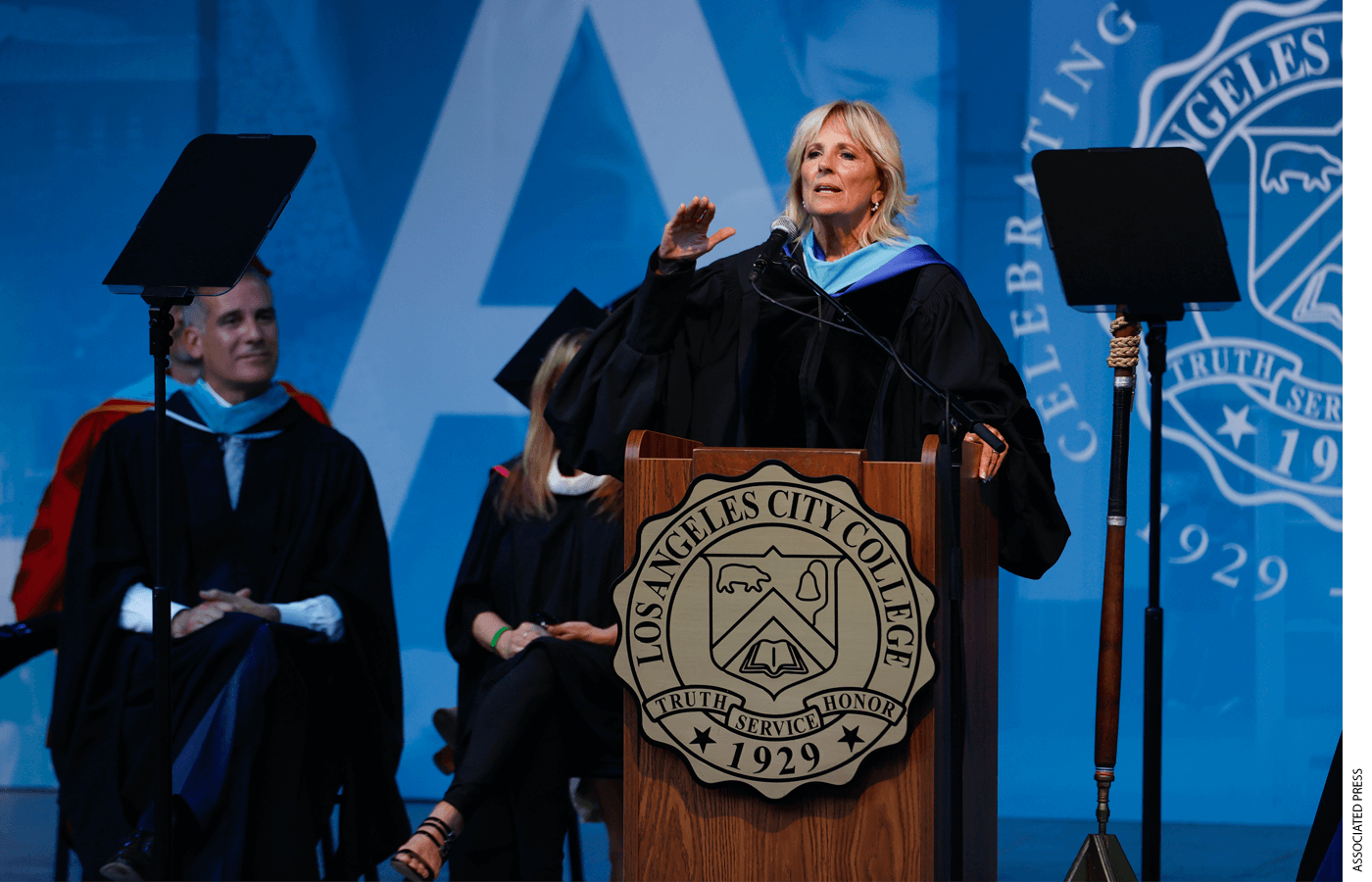
Now that President Biden has announced his unilateral plan to transfer more than a half a trillion dollars in student debt to Americans, most of whom neither went to college nor took out a student loan, you should brace yourself for what’s next on his agenda. At the end of the White House press announcement about loan “forgiveness,” Biden promises to renew his effort to enact his “Free Community College for All” program. He’ll be asking taxpayers to pay for another bad idea.
Community colleges have had a hard time lately. Since 2012, their enrollments have dropped more than a third, to 4.9 million students in 2020 from 7.5 million in 2009, according to the National Center for Education Statistics. Some of the President’s strongest supporters work at community colleges, including First Lady Jill Biden and thousands of members of government labor unions. It’s good politics for him to bolster his allies at those institutions.
So, he’s decided the best way to accomplish his goal is simply to have everyone attend a 13th and 14th grade. I suppose we should at least be grateful that, this time, he isn’t completely circumventing the Congress, or at least not yet.
What could be so wrong with adding two more years to our public K-12 system? Plenty, as outlined in the Defense of Freedom Institute’s paper, Free College or False Promise.
The issue is not whether basic college should be “free”—but rather, who should pay for it. Several states already cover community college tuition for all or most of their students. Education reformers and most conservatives can be generally supportive of that approach. Because states must have balanced budgets, they tend to be more disciplined in weighing the tradeoffs between spending on education, healthcare, and dozens of other government expenditures. When states decide to invest in community colleges, they have carefully weighed their true impact on local economic productivity.
Of all the options available for helping students attend community college, the Biden approach is probably the worst, because it gives direct gifts from the federal government to local institutions. Historically, federal aid has gone to students, not institutions, so that schools will have the incentive to meet the student’s needs. Under the Biden model, those schools will shift their attention to meeting the needs of D.C. politicians.
Of course, the federal government will add strings to institutional funding. Some of those strings sound reasonable—such as requiring community colleges to align their curriculum with local economic needs—but they can be a source of mischief. In fact, colleges already have every incentive to meet local economic needs. Most pernicious would be requirements that local institutions support the cultural norms of D.C. elites, paralleling what we see our national teacher-union leaders supporting.
The country’s thousand or so community colleges need help, just not the Biden plan’s sort of help. Despite their enrollment declines, community colleges are still where one in five high school students choose to attend. (More than half do not take a college pathway out of high school.) Of first-time, full-time community college students, only 17% complete their degrees within the prescribed two years. Over six years, the graduation rate increases to only 35%. These are problems that should be fixed before Congress tries to double or triple community college enrollment. Otherwise, policymakers are asking taxpayers to flush away enormous sums for “free” college that rarely leads to a degree or better job prospects.
Part of the problem is that many of today’s high school graduates are simply not prepared for college-level work, thanks to our dysfunctional K-12 system. About two-thirds of community college students are required to take remedial courses to learn what they should have learned in high school. This isn’t just a community college problem. According to the College Board, only 43 percent of students taking the SAT achieved scores indicating college readiness.
The key to fixing our education and workforce problems is not to throw federal dollars at adding 13th and 14th grades to our under-performing K-12 system, hoping somehow that will improve student outcomes. The answer lies in reimagining our one-size-fits-all education assembly line and replacing it with a system that provides choice, customization, and value for students and teachers. Adding two more grades to our broken system and funding it federally would be the wrong direction. It will only make improving education in America harder.
Jim Blew is a cofounder of the Defense of Freedom Institute. He was Assistant Secretary of Education during the administration of Secretary Betsy DeVos.


